Case Studies.
Add Case Study
Our Case Study database tracks 22,657 case studies in the global enterprise technology ecosystem.
Filters allow you to explore case studies quickly and efficiently.
Download Excel
Filters
-
(6,653)
- (2,601)
- (2,127)
- (945)
- View all
-
(5,642)
- (2,469)
- (1,692)
- (826)
- View all
-
(5,571)
- (2,178)
- (1,766)
- (643)
- View all
-
(5,247)
- (2,179)
- (1,715)
- (1,321)
- View all
-
(2,881)
- (1,448)
- (574)
- (376)
- View all
- View all 15 Technologies
- (1,985)
- (1,985)
- (1,915)
- (1,679)
- (1,629)
- View all 42 Industries
- (8,728)
- (4,742)
- (3,618)
- (3,233)
- (2,947)
- View all 13 Functional Areas
- (3,304)
- (2,787)
- (2,603)
- (2,006)
- (1,630)
- View all 129 Use Cases
- (13,581)
- (5,296)
- (4,272)
- (3,520)
- (2,856)
- View all 9 Services
- (504)
- (432)
- (416)
- (382)
- (301)
- View all 1083 Suppliers
Selected Filters
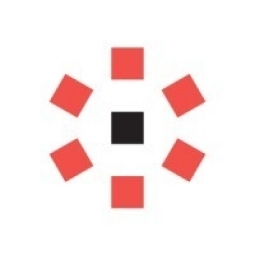
|
Schroders: Enhancing Investment Management with IoT and Data Virtualization
Schroders, a UK-based investment management firm with over $939.2bn worth of assets under management, faced a significant challenge in integrating third-party data sources with internal data to create comprehensive environment, social, and governance (ESG) models. These models are crucial for understanding the companies in which Schroders invests, as the firm aims to ensure its investments are directed towards well-governed, socially, and environmentally compliant companies. The inability to effectively integrate these diverse data sources hindered the firm's ability to produce timely ESG views of its portfolios, which in turn impacted the ability of fund managers to manage ESG risk and make informed investment decisions.
|
|
|

|
MultiChoice: Accelerating Data Access and Enhancing Reporting with Denodo Platform
MultiChoice Group, a leading entertainment company, was facing a significant challenge in managing and integrating its geographically distributed data. The company operates in various countries in Africa and maintains relationships with different service providers, each operating in different countries and providing data in a variety of formats. This diversity made it difficult for the data and analytics team to integrate and process the data using traditional methods. The team was spending over 80 hours per month on data preparation, and the data required for reporting was almost a month behind schedule. The company needed a data integration solution that could connect to all kinds of data sources, integrate the data through a single service layer, and enrich data on the fly.
|
|
|

|
Accelerating Integration Development with IoT: A Case Study on Trustpage
Trustpage, a company that provides B2B SaaS companies with a dynamic Trust Center, faced a significant challenge in their integration strategy. They needed to ensure that their customers' sales teams could securely request and share documents within their CRMs. Additionally, they had to ensure that all teams of their prospects could effectively leverage Trustpage with the tools they were already using. This created an urgency to turn around these integrations quickly. The team began searching for solutions to offload the engineering work for their integration strategy. They needed a solution that met their security requirements, saved substantial engineering resources on each integration, was feasible for their integration use cases, and provided reliable technical and account support.
|
|
|
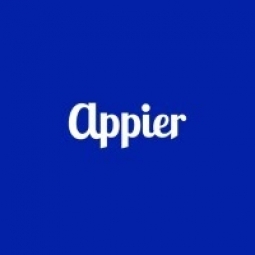
|
Caring Pharmacy's Digital Transformation: A Multichannel Personalized Experience
Caring Pharmacy, a leading pharmacy chain in Malaysia, was facing a significant challenge in bridging the gap between its offline operations and online platforms. As a predominantly brick-and-mortar business, the company recognized the value in the rich offline data generated by its physical stores. However, integrating this offline data with the online data from its digital channels and generating actionable insights was a complex task. The company's goal was to leverage its offline data for personalized marketing on digital channels and activate offline data in recommendation models, A/B tests, and chatbots to empower users to effortlessly locate products. The urgent need for digital transformation and integration led to Caring Pharmacy's partnership with Appier.
|
|
|

|
Shin Kong Life Insurance's AI-Driven Big Data Marketing Strategy
Shin Kong Life Insurance, a Taiwan-based company with over 60 years of history, was looking to leverage FinTech and AI technologies to enhance its big data analysis and prediction capabilities. The company aimed to build comprehensive customer profiles, target high-potential customers, improve advertising effectiveness, provide personalized interactive marketing, and deeply engage with its user communities to increase brand stickiness. The challenge was to effectively integrate AI technologies into their existing systems and processes to achieve these goals. The company also wanted to expand its customer base and increase sales success rates while ensuring precise customer acquisition.
|
|
|

|
Personalized Marketing Boosts Conversion for SK Rent-a-Car
SK Rent-a-Car, a leading long-term car rental company in Korea, faced challenges in driving conversion and maintaining customer engagement. The company needed to move beyond generic messages to attract its consumers’ attention with personalized engagement and boost satisfaction and conversion rate. The process of renting a car was perceived as tedious by customers, leading to a high bounce rate due to the long application journey. The company needed a solution to engage with on-site customers on a real-time basis to keep them on the website and encourage them to complete the application process.
|
|
|
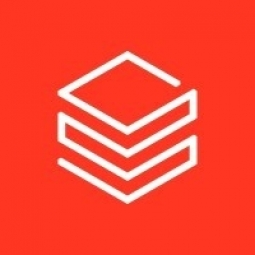
|
Leveraging IoT and Machine Learning to Enhance Customer Experience: A Case Study on AIR MILES Reward Program
Since 1992, LoyaltyOne has operated the AIR MILES Reward Program, generating $70 billion in revenue across their network. Despite having billions of data records from collectors and retail partners, AIR MILES struggled to foster stronger touch points with its customers due to a lagging legacy infrastructure. This outdated system prevented the company from gaining a holistic view of their customers, thereby hindering their ability to improve retention and customer lifetime value. AIR MILES wanted to leverage the petabytes of customer data generated by 558 million transactions per year to enhance the collector experience and enable their partners to better engage and drive revenue. However, their existing technology was unable to support this vision. The company's data scientists couldn't access data older than 5 years, and complicated queries limited what they could do with the data they did have access to. Pipeline development alone took 3 to 4 months, stifling their ability to deliver innovative solutions to market in a timely manner.
|
|
|

|
Boosting Customer Conversion with Conversational AI: A Case Study on Aktify
Aktify, a company specializing in conversational AI, aims to help its clients convert their customers through AI-driven SMS conversations. The company's goal is to make these AI agents as effective as possible, which requires drilling into massive volumes of data to find overlooked insights. However, Aktify faced challenges in managing its complex data dependencies, which hindered data democratization. The company needed a way to allow different teams to interact with data as per their needs. For instance, while a data scientist might need raw data, an executive team would prefer pre-aggregated data for quick decision-making. The company also sought to minimize the risk associated with data transformations and to make data management more simple, flexible, and cost-effective.
|
|
|

|
Creating a Unified Customer View Across 200+ Brands: Al-Futtaim's Journey
Al-Futtaim, a major economic driver in the Middle East, operates and distributes a wide range of global brands, generating a wealth of data across these brands. However, their legacy systems struggled to provide a unified view of their customer due to data silos and the inability to scale efficiently to meet their analytical needs. Business intelligence was slow, forecasting was not scalable and was limited to classical algorithms, and customer insights were too generalized to affect outcomes faster. Their data teams were unable to maximize the promise of their data due to memory and CPU constraints, outdated libraries, and inflexible tooling. Data analysts had to wait four to six hours for small amounts of data to process, which slowed both time-to-insights as well as time-to-market of new ideas. The extra time, effort, and resources required to redesign, implement, test, and launch data projects added unnecessary costs, created a greater divide between business units, and ultimately slowed innovation.
|
|
|

|
AT&T's Transformation: From Legacy Infrastructure to Cloud-Based Lakehouse for Enhanced Fraud Detection
AT&T, a leading communication service provider, was facing challenges with its legacy on-premises architecture. Despite having 182 million wireless customers and handling 10 million transactions per second, the company was struggling to stay ahead of fraudsters. The existing infrastructure was complex and failed to deliver the innovation required for an optimal customer experience. The company was using rule-based technology for fraud detection, which was reactive rather than proactive, making it difficult to stay ahead of sophisticated fraud attempts. The process was not only protracted, inefficient, and resource-heavy, but also expensive. AT&T also struggled to gain real-time insights and automation necessary to optimize dispatch. The company could not unify data points to match a technician’s troubleshooting skills to the customer issue and location, leading to increased operational costs and a negative impact on customer experience.
|
|
|

|
Encore Glass's Supply Chain Efficiency Boosts Winemakers' Growth
Encore Glass, a company that transitioned from recycling bottles to importing new glass and creating custom packaging for customers, faced a significant challenge in managing its transportation operations. The company had identified experienced carriers to work with, but lacked the means to efficiently manage the relationships with these carriers. The sales and customer service teams were responsible for finding their own transportation solutions, including booking trucks, which was a time-consuming process. Furthermore, they often purchased transportation at a significant premium to market prices. The lack of a dedicated transportation team stood in stark contrast to Encore's commitment to customer service, which included fulfilling even the smallest customers' needs with exactly the right bottles, delivered just in time to be filled. The challenge was particularly acute when serving small winemakers in remote areas, who often lacked sufficient storage space.
|
|
|

|
Streamlining Transportation Network: Faurecia's Success with Convoy's Automotive Practice Group
Faurecia, a French tier-one auto parts supplier, was grappling with the complexity of its North American transportation network. The company was seeking to simplify its network, reduce costs, and improve service. The challenge was to find reliable carriers who could deliver their high-value automotive freight on time. The truckload carriers that run automotive freight tend to specialize in it and offer dedicated capacity solutions that can become embedded on very regular, repetitive lanes. This made it difficult for non-asset transportation providers to break into those verticals. Furthermore, the specific requirements of the commodities might make them unsuited for digital freight brokerage.
|
|
|

|
Transforming Freight Operations: Titan Supply Group's Success with FlockDirect
Titan Supply Group, a laminate-flooring importer based in the Pacific Northwest, was facing significant challenges with its less-than-truckload (LTL) shipments. The company, which imports its products from overseas and distributes them to flooring retailers across the United States, was grappling with the common LTL industry issues of damaged and lost freight. This was not only causing financial losses due to the need for restocking damaged goods and filing damage claims, but it was also damaging the company's reputation. The LTL industry's unreliable service, unexpected fees, and poor operating service at the dock were causing significant operational issues for Titan Supply. The company needed a solution that would eliminate these issues and allow it to maintain its stringent schedules and meet its customers' strict delivery requirements.
|
|
|

|
Road Rescue Streamlines Operations and Reduces Costs with Freightview
Road Rescue, a Texas-based company that manufactures a pothole-repair product, was facing a significant challenge in its operations. The company's VP of Operations, Andrew Blades, was frustrated with the amount of time it took to create accurate quotes for customers. This was a critical aspect of the business, as their customers included city and state governments managing large-scale road repairs, big box-stores buying wholesale, and home improvement retailer sites. Any inaccuracies in the quotes could lead to unnecessarily high shipping costs, eating into the profit margins of the orders. Additionally, the labor costs were high due to the hours employees spent entering data.
|
|
|
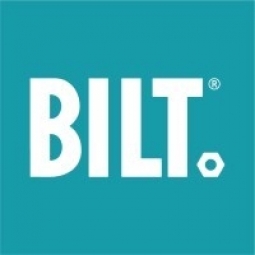
|
Siemens and BILT: Revolutionizing Training for the Next Generation of Electricians
Siemens was facing a significant challenge in bridging the growing skills gap in the manufacturing industry. According to a Deloitte study, 77% of manufacturers were anticipating difficulties in attracting and retaining workers, with an estimated 2.1 million jobs expected to remain unfilled by 2030. Siemens was actively seeking innovative solutions to expedite training and reskilling. The company was particularly focused on providing resources for electrical apprentices, electrical contractors, and distributors through Siemens University, the SIschool program, and VR training initiatives. However, the traditional channels of delivering this content, such as classroom instruction, textbooks, videos, and virtual reality, were not sufficient. The Covid-19 pandemic further complicated the situation by disrupting the global supply chain, leading to longer lead times on fully assembled goods. Distributors needed a faster, cheaper way to get products to their customers.
|
|
|
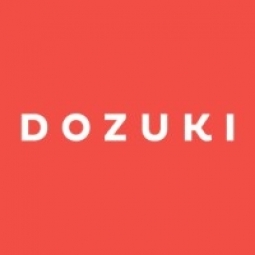
|
Implementing Continuous Improvement for Streamlined Processes and Engaged Employees
Companies, regardless of their size, often struggle with keeping their employees motivated towards shared goals. The challenge lies in creating a culture where teams are invested in company goals and are constantly working towards streamlining processes. The lack of a problem-solving culture can lead to disengaged employees, inefficient workflows, and increased waste and rework. This can ultimately impact the bottom line, reducing the value delivered to customers. Additionally, many companies have a wealth of processes and information locked in tribal knowledge, which is not transferable and cannot be improved upon. This presents a major risk, as without a standard, there is no benchmark to improve upon.
|
|
|

|
Digitizing Processes with Dozuki Saves Thousands Per Hour for Leading Equipment Manufacturer
For nearly a century, a leading manufacturer of construction and mining equipment, diesel and natural gas engines, industrial gas turbines, and diesel-electric locomotives has been striving to digitize and standardize its processes to minimize waste and control machine setups and changeovers. However, the company faced significant challenges in achieving this goal. The existing documentation was limited, making it difficult for frontline workers to share feedback to improve operations. The company was using Excel to create and store process information, which often contained over fifty pages of information that workers had to read and retain. This method also lacked the ability to gather and implement frontline feedback, leading to missed opportunities for operational improvements. The company also faced inconsistencies in production, competency gaps among employees due to job shadowing as a primary training method, and safety concerns. The introduction of new automation technology also posed a challenge as the company needed to ensure that standards were properly distributed to frontline operators.
|
|
|
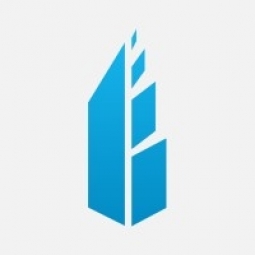
|
Silgan PFC Enhances Quality and Efficiency with Parsable
Silgan Plastic Food Containers (PFC), a global leader in high-barrier plastic packaging, faced several operational challenges. Despite being an industry leader, the company struggled with issues related to transparency and management of tasks. The documentation process was entirely paper-based, leading to a lack of clarity about who was responsible for what tasks and when they were completed. This lack of transparency affected operational results. Handing over responsibilities was also a challenge, especially when team members were absent. Missed tasks were difficult to address due to these issues. Additionally, Silgan was required to conduct one major audit and several smaller ones each year. However, the paper-based filing system made locating necessary documentation a time-consuming and difficult process.
|
|
|

|
McLaren Racing Enhances Marketing Operations with Smartsheet and Brandfolder
McLaren Racing, a prominent player in the fast-paced world of Formula 1 racing, was facing challenges in streamlining its marketing operations. With a busy calendar of 22 races and eight keystone events in 2022, the company was constantly seeking ways to enhance efficiency both on and off the track. One of the key challenges was the coordination of show car bookings, which was a complex and manual process involving branding, staffing, security, and shipping. The logistics of preparing and moving show cars required a lot of time and resources. Additionally, McLaren's digital content team was tasked with providing real-time images of the drivers, team personnel, garage set-up, and on-track action to fans, partners, and the media. However, the process of uploading, cataloguing, and distributing footage was manual and time-consuming, often taking days to deliver images to partners.
|
|
|

|
Premier Arts Center deSingel's Digital Transformation with Bynder's DAM
deSingel, an internationally recognized arts center based in Antwerp, Belgium, faced a significant challenge in managing and promoting its diverse range of programs and community-focused initiatives. The center's content, which includes musical theatre productions, dance events, art residencies, and research programs, is dynamic and targets a wide range of audiences both online and offline. This required a well-coordinated communications department and a high volume of brand and marketing content that was both diverse and distinctly recognizable. The center was already working with Bynder partner and automation specialists, Catena Company, to speed up the design of marketing materials. However, they needed a solution to help them centralize, manage, and distribute their diverse mix of digital assets and brand campaigns.
|
|
|

|
Amorepacific's Global Digital Content Management with Canto
Amorepacific Group, South Korea’s largest cosmetic company, operates over 40 popular beauty and health brands and manages over 650,000 digital assets. The challenge was to manage these digital assets efficiently on a global scale, especially as the company expanded into new markets and shifted towards direct-to-consumer online sales due to the pandemic. The company had previously tried a digital asset management platform, but it was complex, costly, and difficult to use, leading to low user adoption. As the company pivoted to online sales, the lack of a central platform to manage digital assets began to hinder progress. The goal was to find an intuitive system that could manage digital content at a global scale, catering to different brands in multiple global markets, with language options including English, Korean, and Chinese.
|
|
|

|
Heinen’s Grocery Store Enhances Content Creation and Collaboration with Canto
Heinen’s Grocery Store, a family-owned grocer in the Midwest, was facing a significant challenge in managing their content creation process. With over 20 stores in different cities, the marketing team had to create multiple versions of assets for weekly promotions, resulting in a vast amount of content that needed to be found and shared efficiently. The marketing team was responsible for all materials showcasing products in-store and online, and they contracted external designers to create the artwork. However, the team faced disruptions in their workflows due to an unorganized system of storing and sharing graphics, imagery, and videos. If a team member needed a specific graphic that they didn’t commission, it was difficult to locate it, leading to productivity barriers.
|
|
|

|
Enhancing Asset Visibility for Better Customer Service: A Case Study on Logitrans
Logitrans, a leading manufacturer of internal lifting equipment, faced a significant challenge in marketing its products and supporting the sales process. The company provides customized solutions to its customers, which are marketed through a network of dealers worldwide. However, these dealers were often unaware of the availability of new products due to the lack of a centralized system for managing digital assets. Marketing and sales teams struggled to locate and share information about products with potential customers. The problem was further complicated by the fact that each branch office had its own content system and archives, with content stored on local drives or multiple cloud storage accounts. This resulted in no single source of truth for the organization. Additionally, the lack of structure in uploading and categorizing assets, coupled with the multilingual nature of the content, made searching for specific assets difficult.
|
|
|

|
POPSUGAR's Transformation of Digital Asset Management with Canto
POPSUGAR, a leading media company, was facing a significant challenge in managing its vast amount of visual imagery produced for entertainment, fashion, and beauty content. The company was in dire need of a system that could efficiently transform these digital assets into an internal stock photography collection. This was crucial for content producers and post-production editors to quickly and easily access images to meet their tight deadlines. Moreover, the system needed to be highly visual to align with the company's culture and core products.
|
|
|

|
Portakabin Streamlines Digital Asset Management with Canto
Portakabin, a world leader in the design, manufacture, and installation of modular buildings, was facing challenges in managing its digital assets. The company needed a centralized library that was easily searchable to better manage these assets and protect the integrity and consistency of the Portakabin brand. The in-house creative studio at Portakabin handles project briefs from marketing managers across the UK and Europe, with content requests ranging from email campaigns and website videos to product brochures and direct mail campaigns. However, the existing digital asset management (DAM) platform did not provide the workflow features needed to complete projects efficiently. Moving assets to and from workflows was complicated, leading to bottlenecks and a disjointed user experience. As a result, the DAM was not being used effectively to manage assets.
|
|
|

|
Sony Europe's Digital Asset Management Transformation with Canto
Sony Europe's digital imaging division was facing a significant challenge in managing the vast amount of content generated by its Alpha Universe ambassadors. These ambassadors, numbering over 100, were submitting hundreds of images and videos each week, showcasing Sony's range of cameras, lenses, and photography accessories. The content was being received from various sources, including the ambassadors themselves and country managers across Europe. The division was running out of storage space for this incoming content and lacked a system for quickly locating specific assets. The challenge was to consolidate these images and videos into a centralized, easily searchable library.
|
|
|
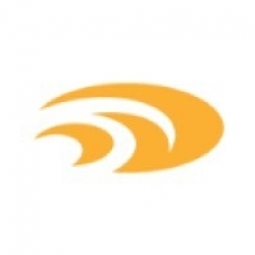
|
Future-Proofing Media Production: Carey Color's Success with DALIM SOFTWARE
Carey Color Inc., a full-service, technology-driven communications company, faced the challenge of utilizing both existing and new technologies to deliver optimal results for their customers. The company needed to manage complex workflows, ranging from small to large, and integrate with other software such as Adobe InDesign. Some of Carey’s larger customers use DALIM ES for photography workflows, where files are imported for quality control and marked up for corrections and color accuracy. The company needed a system that offered more than just digital asset management (DAM), as various stakeholders including eCommerce, legal, artists, marketing, buyers and others are involved in the process. The system also needed to accommodate a high volume of users, with as many as 40-50 users on the system at any given time.
|
|
|

|
Streamlining Artwork Approval and Management with DALIM ES: A Case Study on ISDIN
ISDIN, an international cosmetics and dermatology retail brand, was facing a challenge in streamlining their packaging artwork review and lifecycle management. With a wide product range extending throughout many countries around the world, ISDIN needed an integrated platform to streamline its text and artwork management review. The review process involved many areas in its company, such as marketing, QA, its technical office and regulatory department. Reviews also involved their external partners, such as printers, packaging suppliers and third-party manufacturers. The increasing workload due to market success necessitated a solution that could provide real-time updates on the status of each project, including details such as pending approvals.
|
|
|
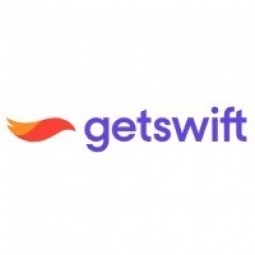
|
Minnesota Bakery “Brake Bread” Boosts Average Basket Size by 50% with IoT
Brake Bread, a subscription-based and on-demand bakery in St. Paul, Minnesota, faced a significant challenge during the pandemic. The bakery, which had been delivering naturally leavened bread since 2014, saw a dramatic shift in its business model in March 2020. Previously, delivery accounted for only 25% of their business, but by September 2020, it had risen to 90%. The rapid increase in delivery subscribers, which tripled from 300 to 900 in just six months, put a strain on their existing community-supported agriculture (CSA) membership management software. The software was not equipped to handle the surge in demand, nor did it provide the necessary features such as real-time inventory, business data, marketing, payments, and delivery routing.
|
|
|

|
Mad Giant Brewery's Successful Transition to Home Delivery with GetSwift
Mad Giant Brewery, an award-winning beer producer based in Johannesburg, South Africa, faced a significant challenge due to the COVID-19 pandemic. The country imposed two separate alcohol bans, which left the brewery without revenue for months. The brewery's traditional business model, which involved selling their beers at their taproom and supplying to bars across South Africa, was severely impacted as people were no longer visiting these establishments. The brewery, known for its quick pace and innovative approach, needed to find a new way to reach its customers and maintain its revenue stream. The growing interest in home alcohol delivery in South Africa presented an opportunity, but the brewery needed a reliable and efficient platform to manage this new business model.
|
|




